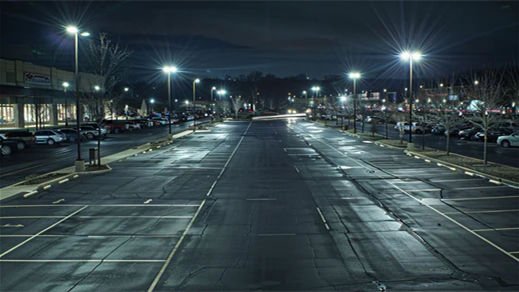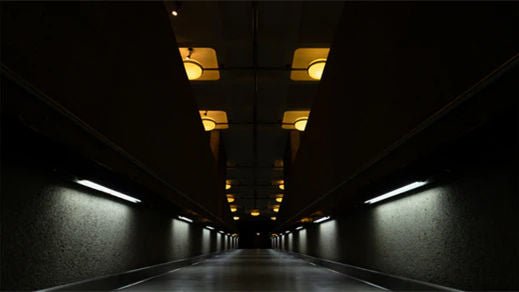2When it comes to choosing the right lighting for your home or business, the options can be overwhelming. Among the most popular choices are photocell lights and motion sensor lights. Each has its unique features, benefits, and ideal use cases. This article will delve into the working principles of both photocell and motion sensor lights, compare them, and provide guidance on which one might be the best choice for your needs.
How Does a Photocell Work?
A photocell, also known as a photoelectric cell, operates based on the principle of photoconductivity. It is a semiconductor device that changes its electrical resistance when exposed to light.
Working Principle of a Photocell
Photocells contain a light-sensitive component, typically made of cadmium sulfide, that reacts to the presence of light. When light hits the surface of the photocell, it excites the electrons in the semiconductor material, reducing its resistance and allowing more current to flow through the circuit. This change in resistance is used to control an electrical circuit, such as turning on or off a light.
In practical applications, a photocell light will automatically turn on when the ambient light level drops below a certain threshold (such as at dusk) and turn off when the light level rises (such as at dawn). This makes photocell lights ideal for outdoor applications where you want lighting to be automated based on the time of day.

How Does a Motion Sensor Work?
Motion sensors, on the other hand, detect movement within a specific area to control lighting or other systems. There are several types of motion sensors, including passive infrared (PIR), ultrasonic, and microwave sensors. Each type has a different mechanism for detecting motion.
Working Principle of a Motion Sensor
a. Passive Infrared (PIR) Sensors
PIR sensors detect the infrared radiation emitted by warm objects, such as humans or animals. They have two slots made of pyroelectric material, which sense the changes in infrared radiation. When a warm object moves across the sensor's field of view, it causes a change in the infrared energy detected by the slots, triggering the sensor.
b. Ultrasonic Sensors
Ultrasonic sensors emit high-frequency sound waves and measure the time it takes for the waves to bounce back from an object. If the sensor detects a change in the time it takes for the waves to return, indicating movement, it triggers the light or device.
c. Microwave Sensors
Microwave sensors emit microwave pulses and detect their reflection from moving objects. These sensors can cover a larger area than PIR sensors and can detect motion through some materials, making them suitable for certain applications where PIR sensors might not be effective.

Photocell vs. Motion Sensor: A Comparison
When comparing photocell lights and motion sensor lights, several factors need to be considered, including functionality, energy efficiency, and ideal use cases.
a. Functionality
Photocell Lights: These lights are primarily designed to respond to changes in ambient light levels. They are perfect for applications where lighting needs to be controlled based on the time of day, such as street lighting, garden lights, or security lighting.
Motion Sensor Lights: These lights are triggered by movement within their detection area. They are ideal for security purposes, as they can startle intruders, and for convenience, as they provide light when someone enters a room or a specific area.
b. Energy Efficiency
Photocell Lights: These lights tend to be more energy-efficient for applications that require consistent lighting throughout the night since they only operate when needed, based on ambient light levels.
Motion Sensor Lights: These lights are highly energy-efficient for intermittent use. They remain off most of the time and only activate when motion is detected, reducing energy consumption significantly.
c. Ideal Use Cases
Photocell Lights: Best suited for outdoor lighting that needs to operate automatically based on natural light, such as street lamps, garden lights, and perimeter security lights.
Motion Sensor Lights: Ideal for areas where lighting is only needed occasionally, such as pathways, driveways, garages, and indoor spaces where automatic lighting is beneficial, like hallways and bathrooms.

Which One Should You Choose?
The decision between photocell lights and motion sensor lights depends largely on your specific needs and the environment in which you plan to use them.
When to Choose Photocell Lights?
Choose photocell lights if you need lighting that adjusts based on the natural light levels. This is particularly useful for outdoor lighting where you want the lights to turn on at dusk and off at dawn without manual intervention. Photocell lights provide consistent lighting throughout the night, enhancing security and visibility.
When to Choose Motion Sensor Lights?
Motion sensor lights are the better choice if you need lighting that activates only when movement is detected. This type of lighting is perfect for security purposes, as it can alert you to the presence of intruders. It's also great for energy-saving in areas where continuous lighting is not necessary but immediate illumination is occasionally required, like in entryways, driveways, or storage areas.
Conclusion
Both photocell lights and motion sensor lights offer distinct advantages and are suited for different applications. Photocell lights provide automated, dusk-to-dawn lighting ideal for outdoor settings, while motion sensor lights offer efficient, on-demand lighting perfect for security and convenience.
When choosing between the two, consider the specific requirements of your space and the primary function you need the lighting to serve. Whether it’s the consistent, ambient lighting provided by photocells or the responsive, energy-saving benefits of motion sensors, understanding how each technology works and its best use cases will help you make an informed decision to enhance your property’s lighting system.


































Leave a comment
This site is protected by hCaptcha and the hCaptcha Privacy Policy and Terms of Service apply.